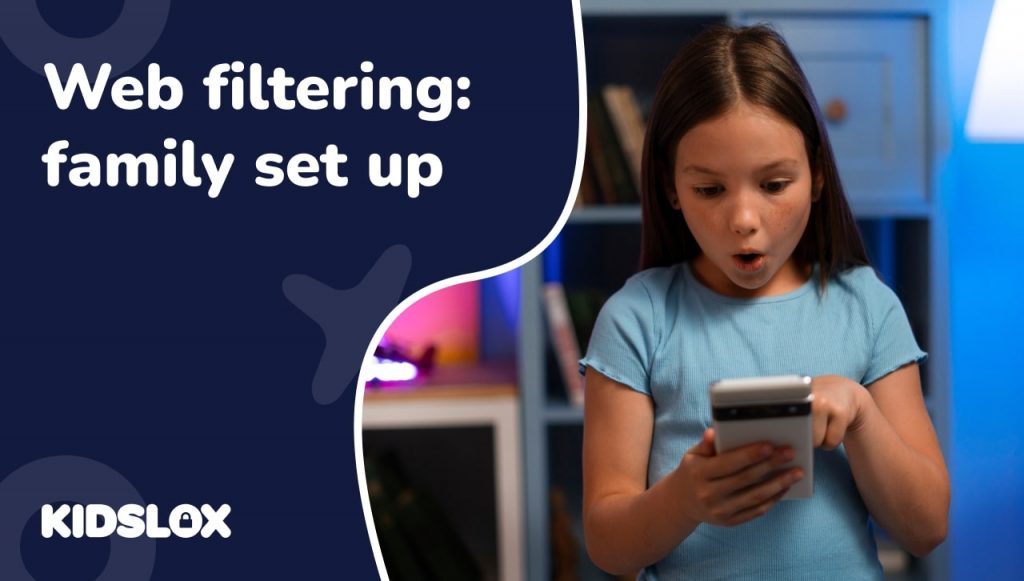Navigate the challenge of screen addiction, from symptoms, the role of ADHD, prevention strategies, treatment options, and more.
In today’s technology-driven world, screens are everywhere – smartphones, computers, tablets, TVs – they’ve become an inseparable part of our lives. While they provide unlimited access to a world of information and connectivity, an over-dependence can lead to screen addiction. This phenomenon is a growing concern among parents and educators, and understanding it is the first step towards managing it.
Screen addiction, also known as digital addiction or Internet addiction, is characterized by an individual’s inability to control their use of digital devices, to the extent that it interferes with daily life and responsibilities. It transcends age boundaries, affecting children and adults alike. A study published in the Journal of Behavioral Addictions found that about 12% of youth aged 9 to 18 meet the criteria for digital addiction. Adults, too, are susceptible, particularly in the era of remote work and social media.
Addressing screen addiction is vital, as excessive time in front of our devices can lead to a wide range of problems – from physical health issues like sedentariness, poor posture, and sleep disturbances, to mental health concerns such as anxiety, depression, and social isolation. Furthermore, for children and teenagers, screen addiction can impact their academic performance and stand in the way of critical social development.
This comprehensive guide aims to provide parents with a better understanding of screen addiction – its symptoms, preventive measures, how to help your kids detach from their devices, and more. By being informed, you’re taking the first, most crucial step in ensuring the healthy use of screens in your home.
Recognizing the Problem: Screen Addiction Symptoms
Screen addiction is a subtle issue, often creeping into our lives without immediate notice.
The most common symptoms are both behavioral and physical, and recognizing them can help curb the addiction in its early stages.
Behavioral symptoms include:
- A preoccupation with screens
- Increased use of digital devices
- Inability to control usage
- Neglect of other activities
- A child who is usually active and sociable may start to withdraw
- Homework may be left unfinished and grades may start slipping
There can also be noticeable changes in mood when screen time is limited or removed. For instance, an ordinarily calm child may become irritable or anxious when their device is taken away or when internet access is restricted. They may lie about the amount of time spent on screens or sneak around to use devices beyond agreed-upon times.
Physically, screen addiction may lead to sleep disorders, as the blue light from screens can disrupt the body’s natural sleep cycle. Also, long hours of being sedentary can lead to poor posture and increased risk of obesity. Other physical symptoms can include eye strain, headaches, and even carpal tunnel syndrome in extreme cases.
The impact of screen addiction isn’t just limited to the individual. It can ripple out to affect their relationships with family and friends, academic performance, and overall quality of life. Remember, every child or adult is unique, and these symptoms can manifest differently in each person. If you notice a combination of these signs, it may be time to address the screen addiction issue head-on.
The Power of Prevention: 7 Ways To Stop Screen Addiction in its Tracks
Screen addiction, like any other addiction, can be challenging to overcome. However, there are preventive measures that can effectively deter its development. Here are some easy strategies to help maintain a healthy relationship with screens and keep the harmony at home!
- Establish Clear Screen Time Rules:
Set reasonable limits for screen use, and stick to them. This might include specific hours during the day when screens can be used and for how long. Make sure these rules are clear and consistently enforced. You can create a media contract at home and get the kids involved in its creation. Display it somewhere public and visible in the house so that it can be referred to easily when needed.
- Encourage a Balanced Lifestyle:
Promote physical activities and hobbies that do not involve screens. This could be sports, reading, arts, crafts, or even cooking. These activities provide alternative sources of entertainment and can help reduce dependence on screens.
- Create Screen-Free Zones and Times:
Designate certain areas of your home (like the dining room) and times (like during meals) as screen-free. This encourages face-to-face interactions and helps establish boundaries between digital and non-digital spaces.
- Model Healthy Screen Use:
As a parent, your behavior greatly influences your child. By modeling healthy screen habits, such as not checking your phone constantly or turning off devices after a certain hour, you teach your child by example.
- Use Parental Control Tools:
Parental control apps like Kidslox can help manage your child’s screen time and ensure they have a balanced digital diet. These tools can control the time spent on specific apps, block inappropriate content, and set internet downtime.
- Enjoy Regular Family Activities:
Engage in regular family activities that don’t involve screens. Get the kids involved in coming up with ideas and suggestions for you all to enjoy together.
- Open Communication:
Have ongoing conversations with your child about the importance of balanced screen use. Make them understand why limits are set and involve them in setting these rules.
These preventive measures aren’t foolproof, and they require consistent effort and patience. However, they can significantly reduce the likelihood of screen addiction developing. The key is balance and moderation – not total elimination.
Implementing a Screen Detox: Taking Back Control
If you suspect your child or even yourself is already dealing with screen addiction, don’t despair. Getting back a healthy balance is absolutely possible.
1. Self-help Techniques:
These are effective for mild to moderate screen addiction. They include strategies like setting and adhering to strict usage limits, taking regular breaks during screen time, and implementing the prevention techniques discussed earlier. Kidslox can help you put these into action right away.
2. Do a Digital Detox:
A temporary, complete break from digital devices can help reset the brain’s reward system. This can be challenging, especially in the initial days, but it can lead to a significant reduction in the urge to use screens. Many people who do a digital detox report a much better relationship with technology afterwards.
3. Professional Help:
If you try a digital detox and nothing seems to be helping, consider some professional support. This can involve psychologists, psychiatrists, or counselors experienced in digital addiction. Treatment may include cognitive-behavioral therapy (CBT), where individuals learn to identify and change patterns of behavior associated with excessive screen use.
4. Family Therapy:
In some cases, family therapy can be beneficial. This type of therapy helps the entire family understand the issue, develop coping strategies, and create a supportive environment for the individual dealing with screen addiction.
5. Support Groups:
Similar to other addiction recovery programs, support groups can be immensely helpful. Sharing experiences with others going through the same struggles can provide a sense of community and understanding, which is crucial in the recovery process. Internet Addicts Anonymous is one such organization.
Remember, recovery from screen addiction, just like any other addiction, is a journey. It requires patience, persistence, and lots of support. The road may seem challenging, but with the right approach and resources, screen addiction can be effectively managed, and control can be regained over digital habits.
The Role of Parents in Screen Addiction Child Treatment
Parents play a pivotal role in helping a child overcome their dependency on digital devices. Your involvement, understanding, and patience can make a significant difference in your child’s recovery journey. Here are some ways you can support your child:
1. Acknowledge the Problem:
Acceptance is the first step towards resolution. Recognizing that your child is facing a screen addiction issue is vital to initiating the recovery process.
2. Educate Yourself:
Understand the nature of screen addiction. Learn about its causes, effects, and potential treatments. This knowledge will help you empathize with your child and take informed steps to help them.
3. Open Dialogue:
Encourage open and non-judgmental conversations with your child about their screen use. Understanding their perspective can give you valuable insights into why they are over-reliant on screens.
4. Seek Professional Help:
If your child’s screen addiction is severe and affecting their daily life, don’t hesitate to seek professional help. Therapists and counselors trained in digital addiction can provide guidance and treatment plans.
5. Implement Healthy Digital Habits:
Implement rules and boundaries for screen use in your home. Make use of parental control tools like Kidslox to manage your child’s screen time effectively.
6. Be Patient and Supportive:
Overcoming screen addiction is not an overnight process. It takes time, and there may be relapses. Be patient, provide encouragement, and celebrate small victories along the way.
Remember, you are not alone in this journey. There are numerous resources and communities to support you and your child in overcoming screen addiction. Being a pillar of support and understanding for your child during this time can go a long way in helping them regain control over their digital habits.
ADHD and Screen Addiction
The fast-paced, immediate-response world of digital screens can be particularly enticing for those with Attention Deficit Hyperactivity Disorder (ADHD). Individuals with ADHD are characterised by impulsivity, difficulty in focusing, and hyperactivity, all of which make them more susceptible to the instantaneous gratification offered by screens.
Research published in the Journal of the American Academy of Child & Adolescent Psychiatry suggests that children and teenagers with ADHD are more likely to develop problematic internet use patterns, highlighting the importance of careful screen time management for this group.
Several factors contribute to this link. The vibrant graphics and rapid feedback provided by digital media can be excessively stimulating and rewarding for the ADHD brain, leading to an overdependence. Moreover, individuals with ADHD may use screens as a coping mechanism, seeking distraction from uncomfortable feelings or thoughts.
It’s important for parents and caregivers of children with ADHD to recognize this heightened risk. While screen time can be a valuable tool for education and entertainment, it’s crucial to promote balance. Encourage various offline activities that can cater to their need for stimulation, such as sports, arts, or hands-on learning projects.
Having structured routines around screen use can also be beneficial. Fixed times for digital activities, along with regular breaks, can help regulate screen usage. You might also consider using parental control apps like Kidslox to help manage your child’s digital diet and establish healthy screen habits.
Understanding the link between ADHD and screen addiction is key to effectively managing screen time for children with ADHD and preventing overdependence on digital devices.
For parents navigating their child’s condition, screen time throws in another hurdle. Having a really strong structure in place to manage their access to screens is vitally important to keep the balance a healthy one. One mother, writing her experiences with her child’s tech-addiction in the ADHD specialist magazine, ATTitude, describes the steps she took, the disruption screens caused, and how she battled to get her son healthy.
Screen Addiction in Adults: It’s Not Just a Kids’ Problem
While much of the discussion around screen addiction revolves around children and teens, it’s important to understand that adults are not immune. In today’s digital age, many adults are also grappling with excessive screen usage.
Adults often rely heavily on screens for work, socializing, and relaxation. Remote work situations and the increased use of social media and digital entertainment platforms have contributed to rising screen time among adults.
The symptoms of screen addiction in adults mirror those in children – neglect of personal responsibilities, physical discomforts like headaches or sleep disorders, and emotional distress when unable to access digital devices. It can affect their professional life, relationships, and overall well being.
Adults struggling with screen addiction should consider seeking help. Self-help strategies, digital detox, and professional counselling can be effective in treating screen addiction. And for parents, addressing your own screen addiction not only benefits you but also sets a positive example for your children, promoting healthier digital habits within the family.
She writes: “Like a lot of parents, I didn’t believe I was permissive or overindulgent with electronics. I set boundaries. I was that mom who only allowed video games on the weekends, and maybe, if he earned it, an hour a day after school. But when I looked at things honestly, it was much more.
He would bring a device to school, which meant he was spending time on his electronics before school during morning care, at recess, and during after care. When we were out to dinner, he was allowed to play on a device while we waited for the food. On the weekends, I would set a timer for an hour, but after push-back and negotiating, one hour would turn into two hours easily, twice a day. At times I would stand my ground and fight with him to turn it off, but other days I just did not have the energy. Especially if I was cooking, doing laundry, or trying to read a book. Sometimes it was easier to just let it go because I had time to myself, and he was being quiet.“
Screen Addiction Withdrawal Symptoms: What to Expect
Much like other forms of addiction, withdrawing from excessive screen use can come with its own set of symptoms. These can vary in intensity, depending on the severity of the screen addiction.
Common withdrawal symptoms include irritability, restlessness, and mood swings. The individual may feel a persistent urge to use digital devices and struggle to focus on other activities. Physically, they might experience headaches, fatigue, or even sleep disturbances.
These withdrawal symptoms can make the recovery process challenging, but it’s crucial to understand that they are temporary. As the individual adjusts to reduced screen time, these symptoms typically lessen and eventually disappear.
Here are a few tips to cope with withdrawal symptoms:
- Be patient: Understand that recovery takes time and it’s normal to face challenges along the way.
- Stay active: Physical activities can help distract from cravings and reduce feelings of restlessness.
- Seek support: Reach out to friends, family, or support groups. Sharing your experiences can provide emotional relief and practical advice.
- Remember, the goal is not to eliminate screen use completely, but to establish a healthier, more balanced relationship with technology.
The Reality of Screen Addiction
As we immerse ourselves further and further into the technological age, the prevalence of screen addiction is a stark reality we must address. However, it’s crucial to remember that screens aren’t the enemy. They offer countless benefits and have become indispensable tools in our lives. The problem arises when the use of these tools becomes excessive and uncontrollable.
Understanding the symptoms of screen addiction, its link with disorders like ADHD, ways to prevent it, and the various treatment options is a significant stride in addressing this issue. Being informed empowers us to make conscious choices and intervene when necessary.
Whether you’re a parent concerned about your child’s screen use, an adult grappling with your own digital habits, or a caregiver for someone with ADHD, remember that help is available and recovery is attainable. By striving for balance, setting clear boundaries, and offering supportive and empathetic assistance, we can navigate the digital world healthily and responsibly.
Every journey begins with a single step, and acknowledging screen addiction is that crucial first step. Let’s continue this journey towards better digital health together.





